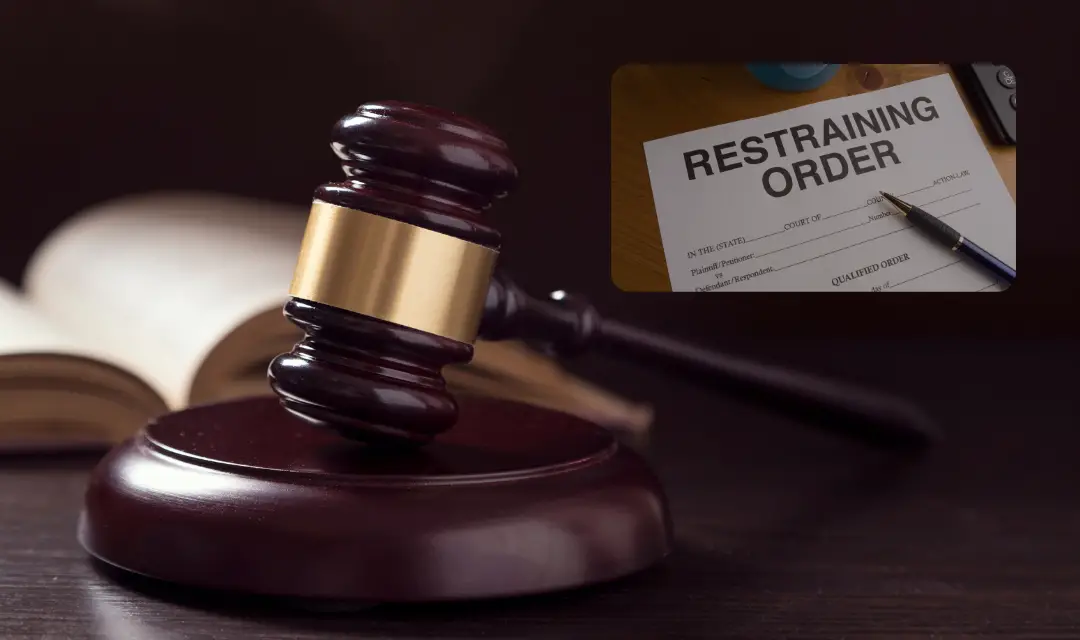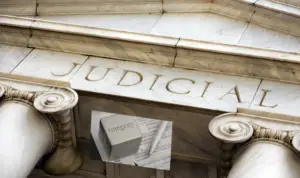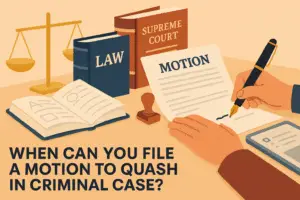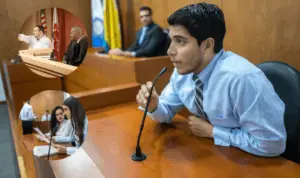As a preliminary recourse, in order to preserve status quo ante, the Rules of Court offer the provisional remedy of injunction for the concerned party. This relief is part of the procedural laws which govern the proceedings in court. The latter, subject to certain requirements, can grant injunctive writs.
Procedural and substantive laws
In our jurisdiction, our laws are classified in to two, namely: substantive law and remedial or procedural law. In the old case of Primicias vs. Ocampo,1 the Supreme Court had the occasion to distinguish substantive law from remedial law to wit:
“Substantive law is that part of the law which creates, defines and regulates rights, or which regulates the right and duties which give rise to a cause of action; that part of the law which courts are established to administer; as opposed to adjective or remedial law, which prescribes the method of enforcing rights or obtain redress for their invasions.”2
Simply put, when a person files a case before a judicial court, there may be an occurrence of violation of his substantive rights. His case, in order not to become a mere scrap of paper, must conform with, and observe, the procedures laid down in our remedial laws.
The Supreme Court, under the 1987 Constitution, has the sole power to promulgate rules pertaining to the practice of law. Article 8, Section 5(5) of the 1987 Constitution provides:
Section 5. The Supreme Court shall have the following powers:
xxx xxx xxx
(5) Promulgate rules concerning the protection and enforcement of constitutional rights, pleading, practice, and procedure in all courts, the admission to the practice of law, the integrated bar, and legal assistance to the underprivileged. Such rules shall provide a simplified and inexpensive procedure for the speedy disposition of cases, shall be uniform for all courts of the same grade, and shall not diminish, increase, or modify substantive rights. Rules of procedure of special courts and quasi-judicial bodies shall remain effective unless disapproved by the Supreme Court.3
Philippine Remedial laws are codified from Rule 1 to Rule 134 of the Rules of Court. The Rules cover Civil Procedure (Rules 1 to 56), Provisional Remedies (Rules 57 to 61), Special Civil Actions (Rules 62 to 71), Special Proceedings (Rules 72 to 109), Criminal Procedure (Rules 110 to 127), and the Rules on Evidence (Rules 128 to 134).
Some of our remedial laws are promulgated by the Supreme Court in the form of court resolution such as the latest rule it promulgated, A.M. No. 08-8-7-SC or the Rules on Expedited Procedures in the First Level Courts, which took effect on March 1, 2022.
Our discussion will focus on the Provisional Remedy of Preliminary Injunction under Rule 58 of the Rules of Court.
What is a provisional remedy?
When a litigant files a case before a judicial court, any event may happen and could affect the substantive rights of the parties involved, pending the promulgation of judgment of said case. Thus, in some cases, a litigant may avail of provisional remedy pending resolution of the principal case he or she has filed in order to protect and preserve certain rights.
In the case of GMA Network, Inc. vs. National Telecommunications Commission,4 the Supreme Court expounded the concept of a provisional remedy. It explained that:
“Provisional reliefs or remedies are writs and processes that are available during the pendency of the action. A litigant may avail of provisional remedies to preserve and protect certain rights and interests pending the issuance of the final judgment in the case.5
These remedies are provisional because they are temporary measures availed of during the pendency of the action; they are ancillary because they are mere incidents in and are dependent on the result of the main action.6
“The ancillary nature of provisional remedies means that they are adjunct to the main suit. Consequently, it is not uncommon that the issues in the main action are closely intertwined, if not identical, to the allegations and counter-allegations of the opposing parties in support of their contrary positions concerning the propriety or impropriety of the provisional relief.”7
A provisional remedy has its nature of being a temporary and ancillary. This is so because, “they are temporary in measures availed during pendency of the action and ancillary because they are incidents and are dependent upon the result of the main action.8
In other words, the termination or extinguishment of a provisional remedy may not affect the proceedings in the principal action considering that the incidents thereto are consequently relative to the latter. On the other hand, when the principal action is extinguished or otherwise terminated, the provisional remedies availed of are likewise terminated.
The provisional remedy of Preliminary Injunction
As provided under Section 1, Rule 58 of the Rules of Court, the provisional remedy of preliminary injunction is an “order granted at any stage of an action or proceeding prior to the judgment or final order, requiring a party or a court, agency or a person to refrain from a particular act or acts. It may also require the performance of a particular act or acts, in which case it shall be known as a preliminary mandatory injunction.”9
Culling from the wordings of the law, preliminary injunction has two classes. One is to “refrain from a particular act or acts,” or otherwise known as the preliminary prohibitory injunction. On the other hand, when one seeks “to require the performance of a particular act or acts,” he is praying for a preliminary mandatory injunction.
In the old yet operative case of Alejandro Rodulfa vs. Francisco Alfonso,10 the Supreme Court discussed the sole object of this provisional remedy. It was held that its sole object is to “preserve the status quo until the merits are heard.”11
Grounds for issuance of Preliminary Injunction
The grounds for the issuance of a preliminary injunction are expressly codified under Section 3, Rule 58 of the Rules of Court, viz:
“Section 3. Grounds for issuance of preliminary injunction. — A preliminary injunction may be granted when it is established:12
(a) That the applicant is entitled to the relief demanded, and the whole or part of such relief consists in restraining the commission or continuance of the act or acts complained of, or in requiring the performance of an act or acts either for a limited period or perpetually;13
(b) That the commission, continuance or non-performance of the act or acts complained of during the litigation would probably work injustice to the applicant; or14
(c) That a party, court, agency or a person is doing, threatening, or is attempting to do, or is procuring or suffering to be done some act or acts probably in violation of the rights of the applicant respecting the subject of the action or proceeding, and tending to render the judgment ineffectual. (3a)”15
Requisites for the issuance of Injunctive Writ
In the case of Medina vs. City Sheriff of Manila16 as cited in Australian Professional Realty vs. Municipality of Padre Garcia, Batangas,17 the Supreme Court laid down the following requisites for an injunctive writ to issue, viz:
“Thus, to be entitled to the injunctive writ, petitioners must show that (1) there exists a clear and unmistakable right to be protected; (2) this right is directly threatened by an act sought to be enjoined; (3) the invasion of the right is material and substantial; and (4) there is an urgent and paramount necessity for the writ to prevent serious and irreparable damage.”18
For an injunctive writ to issue, it is necessary that there is a clear and unmistakable right sought to be protected to prevent serious and irreparable damage.
In the case of Executive Secretary vs. Forerunner Multi Resources Inc.,19 the Supreme Court contemplated the definition of clear and unmistakable right, thus:
“It is a deeply ingrained doctrine in Philippine remedial law that a preliminary injunctive writ under Rule 58 issues only upon a showing of the applicants “clear legal right” being violated or under threat of violation by the defendant. “Clear legal right,” within the meaning of Rule 58, contemplates a right “clearly founded in or granted by law.” Any hint of doubt or dispute on the asserted legal right precludes the grant of preliminary injunctive relief.”20
On the other hand, serious and irreparable damage was defined in the case of Social Security System vs. Bayona,21 as cited in the case of Evy Construction and Development Corp., vs. Valiant Roll Farming Sales Corp.,22 which reads:
“Injury is considered irreparable if “there is no standard by which [its] amount can be measured with reasonable accuracy.” The injury must be such that its pecuniary value cannot be estimated, and thus, cannot fairly compensate for the loss. For this reason, the loss of goodwill and business reputation, being unquantifiable would be considered as grave and irreparable damage.”23
How is it different from an Action for Injunction?
An injunction may be a principal action or a provisional remedy. It is a judicially issued writ ordering a person to refrain from doing a certain act, or to compel the performance of a particular act.
The principal action of injunction seeks a judgment embodying a final injunction, while the provisional remedy of preliminary injunction has its sole object to preserve the status quo until merits can be heard.
What is Status Quo?
Status quo is the last actual peaceable uncontested status which preceded the pending controversy,24 and its preservation is the office of an injunctive writ.25 Status quo is also “defined as the last actual, peaceful and uncontested status that precedes the actual controversy, that which is existing at the time of the filing of the case”26
Difference between Status Quo Ante Order and Preliminary Injunction
The distinction between the two was discussed by the eminent Justice Florenz Regalado27 as cited in the case of Megaworld Properties and Holdings, Inc. vs. Majestic Finance and Investment Co., Inc.,28 which reads:
“[U]nlike a temporary restraining order or a preliminary injunction, a status quo order is more in the nature of a cease and desist order, since it neither directs the doing or undoing of acts as in the case of prohibitory or mandatory injunctive relief. The further distinction is provided by the present amendment in the sense that, unlike the amended rule on restraining orders, a status quo order does not require the posting of a bond.”29
Is there a need to set the application for injunctive relief for hearing?
Yes, it is required by the law. Sections 4 (d) and 5 of Rule 58 provides the necessity of a hearing before a writ of preliminary injunction be issued. The said provisions, read:
“Section 4. Verified application and bond for preliminary injunction or temporary restraining order. — A preliminary injunction or temporary restraining order may be granted only when:30
xxx xxx xxx
(d) The application for a temporary restraining order shall thereafter be acted upon only after all parties are heard in a summary hearing which shall be conducted within twenty-four (24) hours after the sheriff’s return of service and/or the records are received by the branch selected by raffle and to which the records shall be transmitted immediately.31
Section 5. Preliminary injunction not granted without notice; exception. —32
“No preliminary injunction shall be granted without hearing and prior notice to the party or person sought to be enjoined.33
“If it shall appear from facts shown by affidavits or by the verified application that great or irreparable injury would result to the applicant before the matter can be heard on notice, the court to which the application for preliminary injunction was made, may issue a temporary restraining order to be effective only for a period of twenty (20) days from service on the party or person sought to be enjoined, except as herein provided.34
“Within the said twenty-day period, the court must order said party or person to show cause, at a specified time and place, why the injunction should not be granted, determine within the same period whether or not the preliminary injunction shall be granted, and accordingly issue the corresponding order.35
“xxx xxx xxx”
Jurisprudence dictates that a:
“[P]reliminary injunction is an order granted at any stage of an action or proceeding prior to the judgment or final order, requiring a party or a court, agency or a person to perform to refrain from performing a particular act or acts.36
“As an extraordinary remedy, injunction is calculated to preserve or maintain the status quo of things and is generally availed of to prevent actual or threatened acts, until the merits of the case can be heard.37
“A preliminary injunction persists until it is dissolved or until the termination of the action without the court issuing a final injunction.”38
There are instances when the issuance of a preliminary injunction is barred. These are the following:
a) Labor Dispute (Art. 254 of the Labor Code);
b) Collection of Taxes;
c) Asset privatization trust;
e) Agrarian Reform (Sec. 55 of the Comprehensive Agrarian Reform Law);
d) Foreclosure by government financial institution (Sec. 2 P.D. No. 385);
e) Conservatorship, receivership, and liquidation proceedings (Sec. 30 of the New Central Bank Act; and
f) Government Infrastructure Projects.
Can Courts of different Judicial Region enforce an Injunctive Writ issued by another Court where the writ was applied?
There is a difference in the enforcement of a writ of preliminary injunction, depending on which court issued the same.
According to Sec. 3 of the Interim Rules and Guidelines Relative to the Implementation of BP 129, a writ of injunction issued by a regional trial court may be enforced in any part of the region. This provision is applicable as well to writs issued by first level courts.
For instance, RTC Branch 219 of Quezon City issued a writ of preliminary injunction. The same can be enforced only within the National Capital Judicial Region. It cannot be enforced in Rizal Province as it will go against the wordings of the interim rules.
However, an injunctive writ may be served and enforced anywhere in the Philippines if the same was issued by the Supreme Court and Court of Appeals.
Supreme Court cannot issue a Writ of Injunction
The Supreme Court does not have an original jurisdiction to grant an injunctive writ. This was elucidated in the old cases39 of Diokno vs. Reyes,40 and Madarang vs. Santamaria,41 which reads:
“An application for a preliminary injunction will be denied by the Supreme Court unless the same is petitioned for in connection with some other remedy or in an action actually pending in that court. An appeal, brought to this court by means of a bill of exceptions, from an interlocutory judgment or order of the inferior court is not an action pending in this court upon which a preliminary injunction can be based.”42
Prohibition/Injunction directed against Congress
Courts have no jurisdiction restrain Congress from performing its constitutionally vested function to conduct investigations in aid of legislation.
In the case of Senate Blue Ribbon Committee vs. Hon. Jose Majaducon, G.R. No. 136760, July 29, 2003,43 the Supreme Court ruled that:
“xxx xxx xxx
The principle of separation of powers essentially means that legislation belongs to Congress, execution to the Executive, and settlement of legal controversies to the Judiciary. Each is prevented from invading the domain of the others.When the Senate Blue Ribbon Committee served subpoena on respondent Flaviano to appear and testify before it in connection with its investigation of the alleged misuse and mismanagement of the AFP-RSBS funds, it did so pursuant to its authority to conduct inquiries in aid of legislation. This is clearly provided in Article VI, Section 21 of the Constitution, thus:44
The Senate or the House of Representatives or any of its respective committees may conduct inquiries in aid of legislation in accordance with its duly published rules of procedure. The rights of persons appearing in or affected by such inquiries shall be respected.45
Hence, the Regional Trial Court of General Santos City, or any court for that matter, had no authority to prohibit the Committee from requiring respondent to appear and testify before it.46
xxx xxx xxx”
Courts cannot enjoin the Decision issued by the National Labor Relations Commission [NLRC]
Following the aforementioned limitation on the judicial power to issue writs or injunction/prohibition, the Supreme Court likewise held in the case of New Pangasinan Review, Inc., vs. NLRC,47 that courts has no jurisdiction to issue the restraining order against the execution of a judgment issued by the NLRC. The High Court ruled in this wise:
“xxx xxx xxx
Corollarily, there is no question that in G.R. 86968, respondent judge acted without jurisdiction and committed grave abuse of discretion in denying Olairez’ motion to dismiss Civil Case D-9187.48
It is basic that the RTC is not superior to but equal in rank with the NLRC and has no jurisdiction to issue the restraining order against the execution of the NLRC decision dated June 10, 1987 (Imperial Vegetable Worker’s Union, et al. v. Benjamin A. Vega, et al., G.R. Nos. 57005-07, November 23, 1988, 167 SCRA 601). Courts cannot enjoin execution of judgment rendered by the National Labor Relations Commission (Villanueva v. Adre, supra).49
Likewise explicit in Art. 254 of the Labor Code is the prohibition against courts or other entities on the issuance of injunction or restraining order in cases involving or growing out of labor disputes.50
In the cases of “Filipino Pipe Workers Union (NLU) v. Demetrio M. Batario, Jr., and Filipino Pipe and Foundry Corp. vs. NLRC, et al., (G.R. No. 75951, July 29, 1988; G.R. No. 79417, July 29, 1988, respectively, 163 SCRA 789),51 Chief Justice Fernan cautioned judges of lower court in entertaining actions involving decisions, demands or orders of the Labor Arbiters as well as the NLRC, particularly where the caption of the complaint is “Prohibition with Preliminary Injunction” which is sufficient to put a judge on guard (supra, p. 796).52
xxx xxx xxx”
Only the Supreme Court can issue an Injunctive Writ over government infrastructure projects
This is an exception to the general rule mentioned earlier that courts are barred to issue an injunctive writ over government infrastructure projects.
This was explained in the case of Dynamic Builders & Construction, Co. (Phils), Inc. vs. Hon. Ricardo Presbitero, et al.,53
“Section 3 of Republic Act No. 8975 provides for such a remedy when it gave an exception to the general rule prohibiting lower courts from issuing provisional injunctive relief against national government projects:54
“Sec. 3. Prohibition on the Issuance of Temporary Restraining Orders, Preliminary Injunctions and Preliminary Mandatory Injunctions. – No court, except the Supreme Court, shall issue any temporary restraining order, preliminary injunction or preliminary mandatory injunction against the government, or any of its subdivisions, officials or any person or entity, whether public or private, acting under the government’s direction, to restrain, prohibit or compel the following acts:55 . . . .
“xxx xxx xxx
“Republic Act No. 8975 definitively enjoins all courts, except the Supreme Court, from issuing any temporary restraining order, preliminary injunction, or preliminary mandatory injunction against the government, or any of its subdivisions, officials or any person or entity to restrain, prohibit or compel the bidding or awarding of a contract or project of the national government, precisely the situation that obtains in this case with respect to the Agno River Project.56
“The only exception would be if the matter is of extreme urgency involving a constitutional issue, such that unless the temporary restraining order is issued, grave injustice and irreparable injury will arise.57
“xxx xxx xxx
“This is consistent with Republic Act No. 8975’s policy that “the State shall ensure the expeditious and efficient implementation and completion of government infrastructure projects to avoid unnecessary increase in construction, maintenance and/or repair costs and to immediately enjoy the social and economic benefits therefrom.”58
“This policy declaration does not distinguish between national and local government infrastructure projects. Delay in the project will only mean additional costs for the government and prejudice to the people of the Municipality of Valladolid who will directly benefit from the Construction Shoreline Protection Project.”59
- G.R. No. L-6120, June 30, 1953[↩]
- Ibid.[↩]
- Article VIII, Section 5(5)1987 Constitution[↩]
- G.R. No. 181789, February 3, 2016[↩]
- Ibid.[↩]
- Ibid.[↩]
- Ibid.[↩]
- Buyco vs. Baraquia, G.R. No. 177486, December 21, 2009[↩]
- Section 1, Rule 58, Rules of Court[↩]
- G.R. No. L-144, February 28, 1946[↩]
- Ibid.[↩]
- Section 3, Rule 58, Rules of Court[↩]
- Id.[↩]
- Id.[↩]
- Id.[↩]
- G.R. No. 113235 July 24, 1997[↩]
- G.R. No. 183367, March 14, 2012[↩]
- Ibid.[↩]
- G.R. No. 199324, January 7, 2013[↩]
- Ibid.[↩]
- G.R. No. L-13555, May 30, 1962[↩]
- G.R. No. 207938, October 11, 2017[↩]
- Ibid.[↩]
- Supra., Rodulfa vs. Alfonso[↩]
- Versoza vs. CA, G.R. No. 119511 November 24, 1998[↩]
- A.M. No. 06-6-8-CA, March 20, 2007[↩]
- Remedial Law Compendium, 6th Revised Edition, 1997, p. 651[↩]
- G.R. No. 169694, December 9, 2015[↩]
- Ibid.[↩]
- Section 4, Rule 58, Rules of Court[↩]
- Id.[↩]
- Section 5, Rule 58, Rules of Court[↩]
- Id.[↩]
- Id.[↩]
- Id.[↩]
- Miriam College Foundation vs. CA, G.R. No. 127930, December 15, 2000, as cited in Bicol Medical Center vs. Botor, G.R. No.214073, October 4, 2017[↩]
- Ibid.[↩]
- Ibid.[↩]
- These cases have not been overturned by the Supreme Court, to date[↩]
- G.R. No. L-3776, January 23, 1907[↩]
- G.R. No. L-13316, December 11, 1917[↩]
- Ibid.[↩]
- G.R. No. 136760, July 29, 2003[↩]
- Ibid.[↩]
- Ibid.[↩]
- Ibid.[↩]
- G.R. No. 85939, April 19, 1991[↩]
- Ibid.[↩]
- Ibid.[↩]
- Ibid.[↩]
- Ibid.[↩]
- Ibid.[↩]
- G.R. No. 174202, April 7, 2015[↩]
- Ibid.[↩]
- Ibid.[↩]
- Ibid.[↩]
- Ibid.[↩]
- Ibid.[↩]
- Ibid.[↩]




